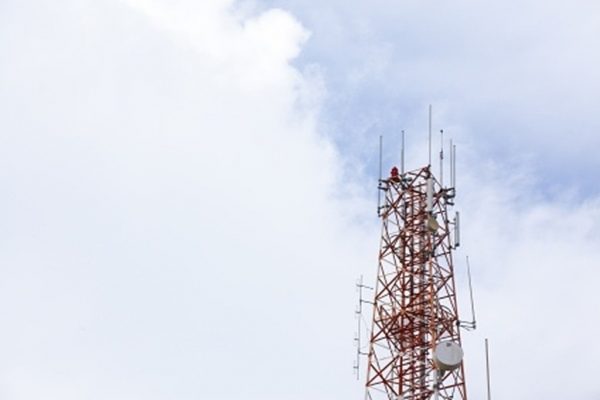Ofcom Finish Clearing 700MHz TV Band for UK Mobile Broadband

After several years of difficult work Ofcom has this week officially completed one of their “biggest” ever UK projects, which involved moving Digital Terrestrial TV (Freeview) channels out of the 700MHz spectrum band to free up those airwaves for use by 4G and 5G based mobile technology in 2021.
Lower frequencies like this (in the context of mobile bands) are ideal for delivering wide geographic coverage as they travel further and penetrate better into buildings (complemented by the 800MHz and 900MHz bands), but on the flip side there’s less spectrum frequency to go around and that means slower data speeds. Mobile operators can mitigate some of that by using Carrier Aggregation (CA) to combine several bands.
Clearing the 700MHz band for mobile meant many TV transmitters (masts) needed to change the frequency they used (some channels were moved into the 600MHz band) and planning all this was a complex job. All the new frequencies needed to coexist without interference and Ofcom also needed to negotiate agreements with other countries to make sure the UK’s spectrum use didn’t interfere with theirs.
Advertisement
In some cases Ofcom – working alongside DCMS, Arqiva, Digital UK and Freeview – even had to replace the antenna on some masts, which was quite a big job in itself and required skilled helicopter pilots (note: the embedded Vimeo video below always asks for VR permissions, so just block that request if it pops-up in your browser as it’s irrelevant).
https://player.vimeo.com/video/449286152
When the TV transmitters changed frequencies, this meant millions of Freeview TV viewers had to retune their televisions to pick up the new frequencies (warnings about this were displayed ahead of time), which is a process that most people should be familiar with due to general changes in the channel line-up that occur all the time.
Ofcom Statement
One of the priorities for this project was to cause as little impact as possible on people’s TV viewing. If a retune didn’t work for viewer and they could no longer receive TV, a support phone line, website and online videos were available for people who had difficulties. In many cases in-home support was offered to viewers who had more challenging retune problems. Some viewers needed to replace their aerials – but this was a very small number of cases.
Making sure people still had access to their Freeview TV services was one of the reasons the project took so long. We staggered the work to minimise the disruption and avoid key events, like major sporting occasions.
As well as TV viewers, users of wireless microphones in the theatre and TV production industries also had to change their equipment to operate in new spectrum bands as a result of 700 MHz clearance.
All the attention will now switch to next year’s auction, which is due to take its first bids in January. Despite this a question mark remains over whether or not the auction will go ahead, not least since O2, Vodafone and Three UK have all criticised the approach and called for a fairer distribution of spectrum (i.e. one that saves them money and avoids squabbling over allocations in the final assignment stage).
Advertisement
Spectrum ownership is the lifeblood of the industry and thus any auction of new bands tends to always attract competitive disputes between operators and the regulator, which has a long history of creating delays.
We should add that the 700MHz band was originally due to attach a coverage obligation, but was scrapped as part of the £1bn industry led Shared Rural Network (SRN) agreement. The SNR requires the targeted sharing of existing masts and new masts in poorly served areas, which aims to extend UK geographic 4G coverage to 95% by the end of 2025 (5G will also play a role).
Mark is a professional technology writer, IT consultant and computer engineer from Dorset (England), he also founded ISPreview in 1999 and enjoys analysing the latest telecoms and broadband developments. Find me on X (Twitter), Mastodon, Facebook, BlueSky, Threads.net and Linkedin.
« Confusion Over BT’s Definition of a Tablet After BT Sport Block UPDATE























































Has this happened even on Freeview lite transmitters? Certainly in local areas with their limited coverage, would be little point, if there’s no mobile coverage, or likelyhood.
It’s UK-wide.
Unfortunately it’s a requirement for them as when they sell off the 700MHz spectrum it’ll be the whole 700MHz spectrum for the entire of the UK. So although freeview lite transmitters may move frequency there will be no loss of channels unlike some bigger transmitters which simply don’t have the space for some channels now. Also many mobile operators (especially EE) try to set up 4G and 5G in very rural coverage areas so they can say they’ve got the best coverage.
This wouldn’t have been an issue if everyone had satellite (freesat/sky).
Of course those pesky planning rules stopping dishes on listed buildings or conservation areas or those who’s houses are surrounded by trees etc would stop that being a reality.
At the outset of the switchover to digital terrestrial television around 2008, it was envisaged that the system could be turned off around 2030 if the majority of the UK population had access to an ultrafast broadband connection. Sky are also keen to abandon the Astra satellites and cut out large costs. The mass switch-over to DAB has stalled, for another 10 years, at least. I remember a wise old work colleague saying to me -“what used to be delivered on wires is going wireless (i.e. telephones) and what is currently delivered by wireless is going onto wires (television & radio content). He probably didn’t forsee fibre in lieu of wires!
Digital is meant to be better than analogue but aside from CD, Audio has had the dirty end of the stick with highly compressed MP3s and now DAB which can have quality lower than the awful 128k MP3s.
ITs about time BBC, Bauer, Global and others to design a high quality digital radio that can broadcast stations nationally at least at FM quality, but ideally towards higher quality.
It’s all about the available bandwidth. If the Govt decided to have less stations licenced, then more bandwidth and hence better audio quality could be allocated to those which remain. Perform a YouTube search for Fry & Laurie on Choice a satirical view on the way broadcasting was heading!
If true why am I still receiving a multiplex (BBC4HD etc) on ch55 (crystal palace) right in the middle of the 700MHz band?
Those channels are on MUX 7 which is a temporary MUX.
You receive then at the moment but those MUX’s will be turned off in time for the mobile spectrum going live.
You will then lose BBC4HD.
https://www.aerialsandtv.com/knowledge/transmitters/crystal-palace-transmitter
Hmm, okay thanks. I can’t help thinking that the 700MHz clear out isn’t really complete yet then. Do we know when it will be switched off?
The 700MHz clearance was basically moving channels that will be kept on Freeview off the 700MHz spectrum.
It was a huge task doing all this across the country as some areas are covered by a number of transmitters.
It needed choreographed in such a way so as not to interfere with neighbouring transmitters.
In some areas the band of aerial required even changed.
All this work is now complete.
In the mean time MUX 7/8 were left active on a temporary basis.
MUX 8 is already gone on many transmitters.
There will be no more moving channels and therefore customers retunes aren’t required.
They will simply flick a switch and turn off MUX 7/8 when the time comes.
Any (temporary) channels on those MUX will then be gone from Freeview.
I can’t find any dates when the temporary MUX will be turned off, but officially the 700MHz clearance is complete.
OFCOM are just doing something sensible for a change and allowing temporary access to the channels that were to be killed off Freeview.
Isn’t the real issue that the 700mhz band is only good for long distance transmission and not for actually improving speeds?
Not that carriers need to improve speeds when they get away with delivering such poor quality 4g services anyway.
5g can deliver faster speeds than 4g so it will still deliver decent speeds and will improve coverage. It will also be used in every EU country so if you have a 5g phone that works using the 700mhz band then you will be able to get signal in every eu country that supports 5g 700mhz.
Surely the future is just a move to a free IPTV platform and get rid of tv masts altogether. The vast majority of the country can get a connection like that and ones who can’t can get Freesat.
Some households living in deep valleys, with no line of sight to the skyline to the south, cannot receive from the Astra satellites
But surely there is very few homes which can’t get both Satellite and about 10mbps for IPTV
A free IP TV platform where you pay £x/month for a broadband connection?
“But surely there is very few homes which can’t get both Satellite and about 10mbps for IPTV”
Something tells me you’re not in that category.
I bet you wouldn’t have the same opinion if you were.
@The Facts
If we had a more joined up infrastructure approach, no.
FTTP networks can both deliver traditional RF signals (e.g. you could pipe Freeview over it and the end user just needs to plug it straight into a normal TV) or you could be a bit more technical and create some sort of “public access network” which offered free access to government sites + multicast for TV services.
Either could be provided alongside a paid for full fat internet service.